MARIETTA COLLEGE
IN SEASONS
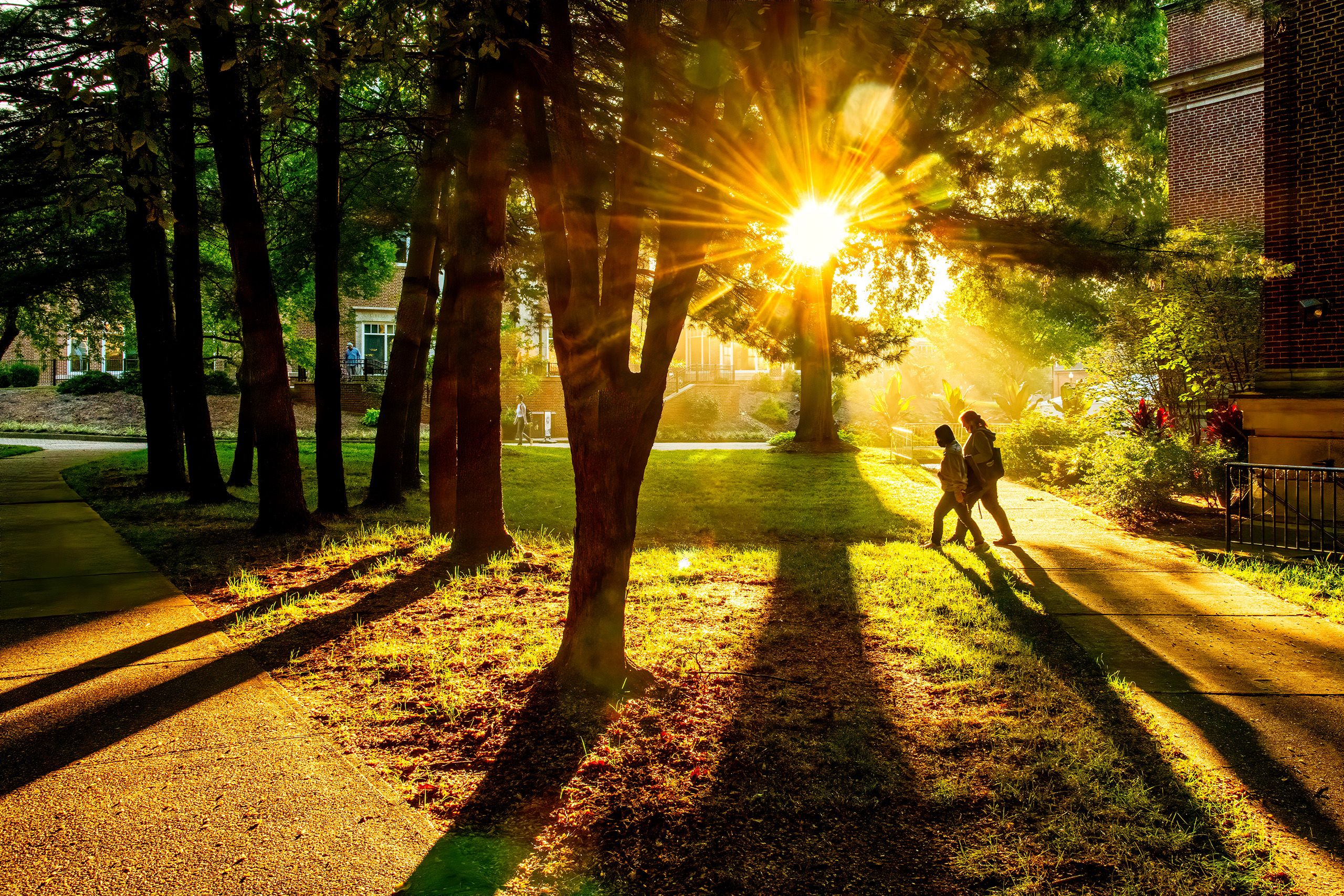
At a glance, the place looks like it is set in a charming New England town. Stunning and timeless, Marietta College's campus has provided the best first impression to prospective students looking for a place to call "home" and effortlessly opens a flood of fond memories to graduates who have moved on from Marietta months, years, and even decades ago.
For alumni who return for Homecoming or other special events, re-exploring their alma mater helps them reconnect with their past; and seeing the 90-acre campus from today's perspective gives them a true appreciation of just how beautiful their home away from home is.
For an entire year, Marietta Magazine engaged with Bruce Wunderlich, the famed nature photographer who worked for many years at the Bird Watcher's Digest, to capture Marietta College in all four seasons, starting with Fall — when new students first learn they have a second home.
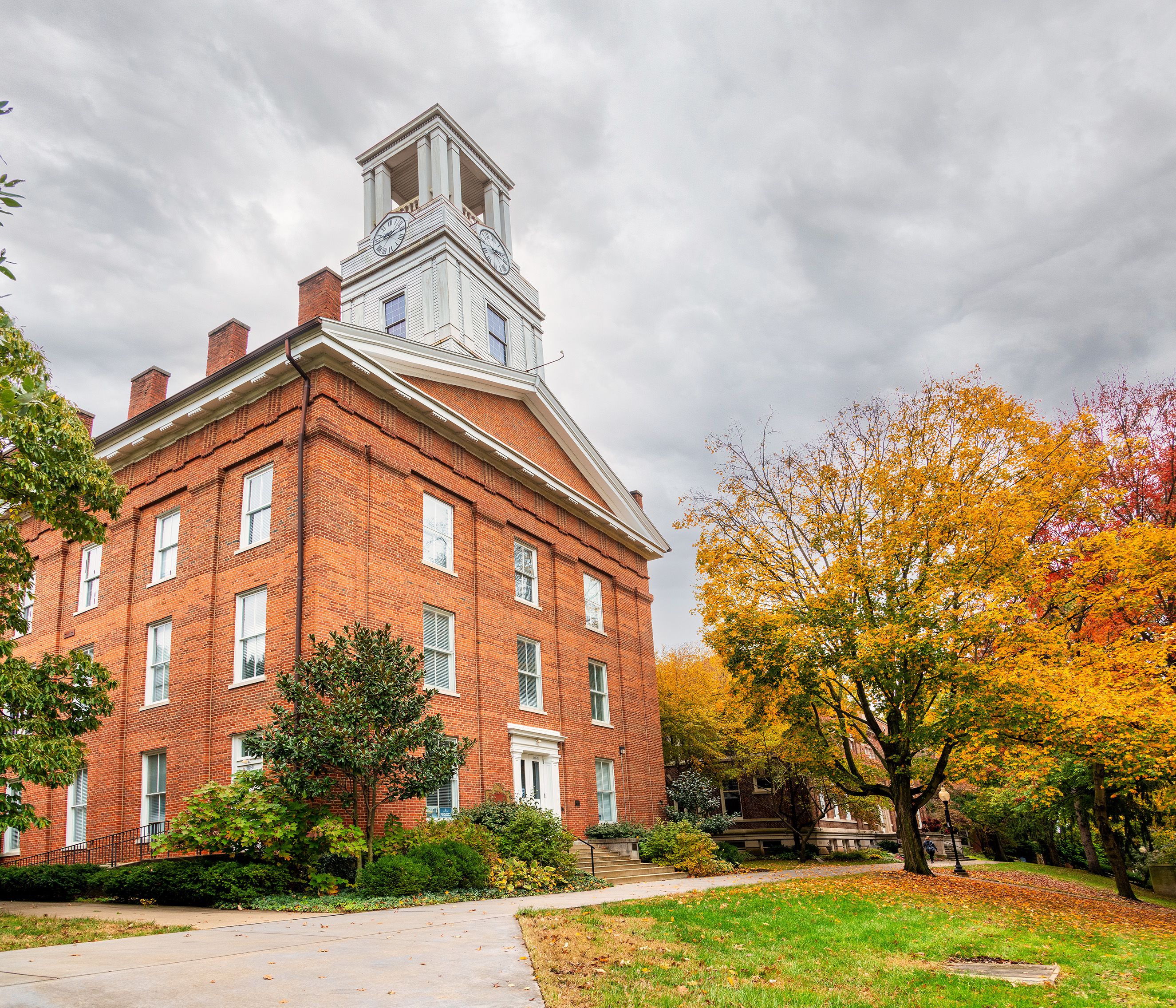
Originally owned by The Marietta Times, the local newspaper, what would become the McKinney Media Center was purchased by the College in 1983. Today, it's home to the Donald Ritter ’81 and Leslie Straub Ritter ’85 Music Therapy Department, as well as WCMO (TV), WMRT-FM and WCMO-FM (Radio) stations.
The green space facing Fourth Street has long been a popular spot for students to study and play a variety of sports. Past students knew this part of campus as DU Field, an homage to the Delta Upsilon fraternity.
The Christy Mall is the main artery of campus, and the Phi Beta Kappa Clock sits at its heart. In 2010, Marietta College celebrated its 150 anniversary of being the Gamma Chapter of Ohio — the 16th oldest in the nation. Part of the inscription on the northwest side of the clock includes the inscription: “The love of wisdom is the guide of life,” and the southeast facing side is inscribed “Phi Beta Kappa—Gamma of Ohio—1860.”
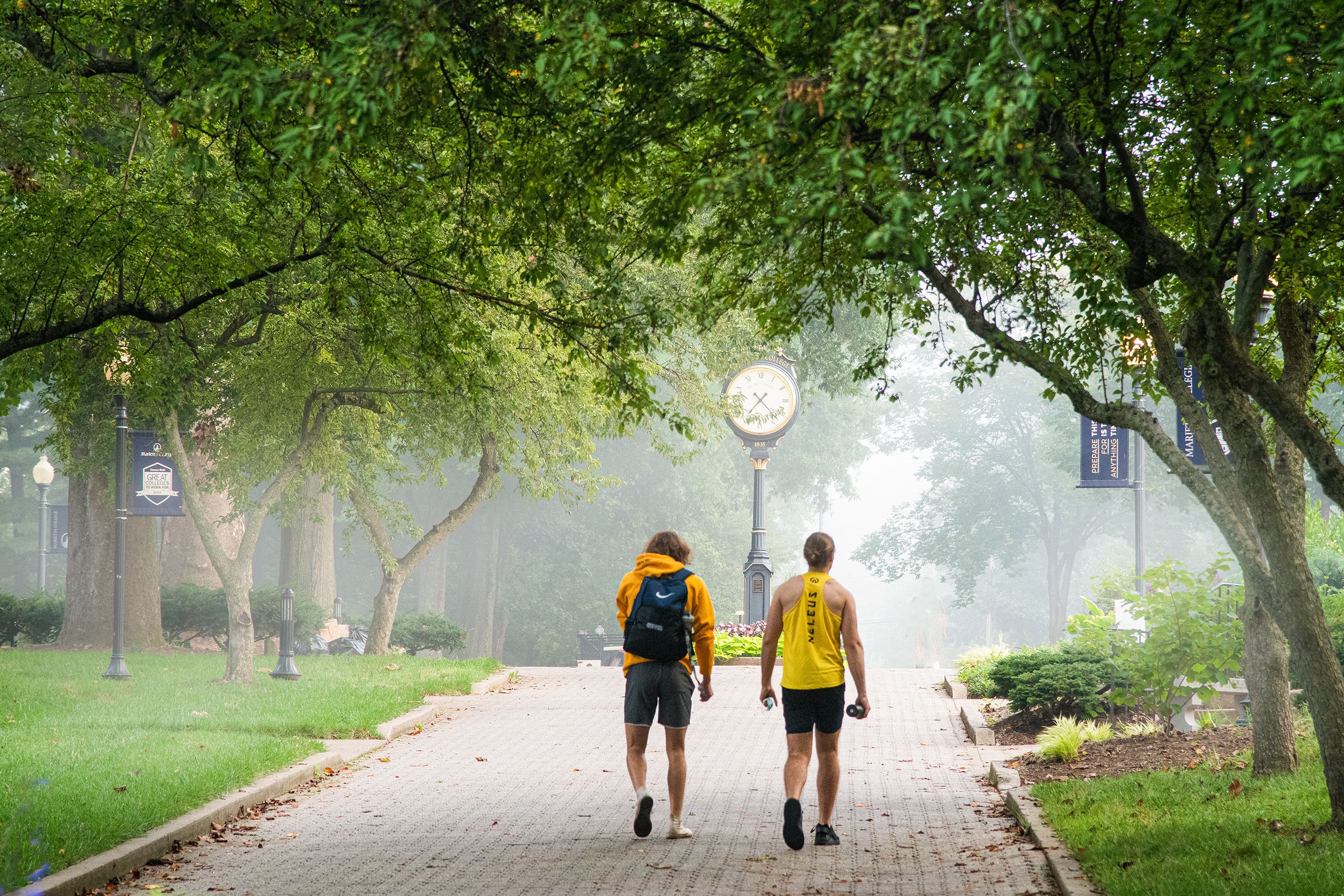


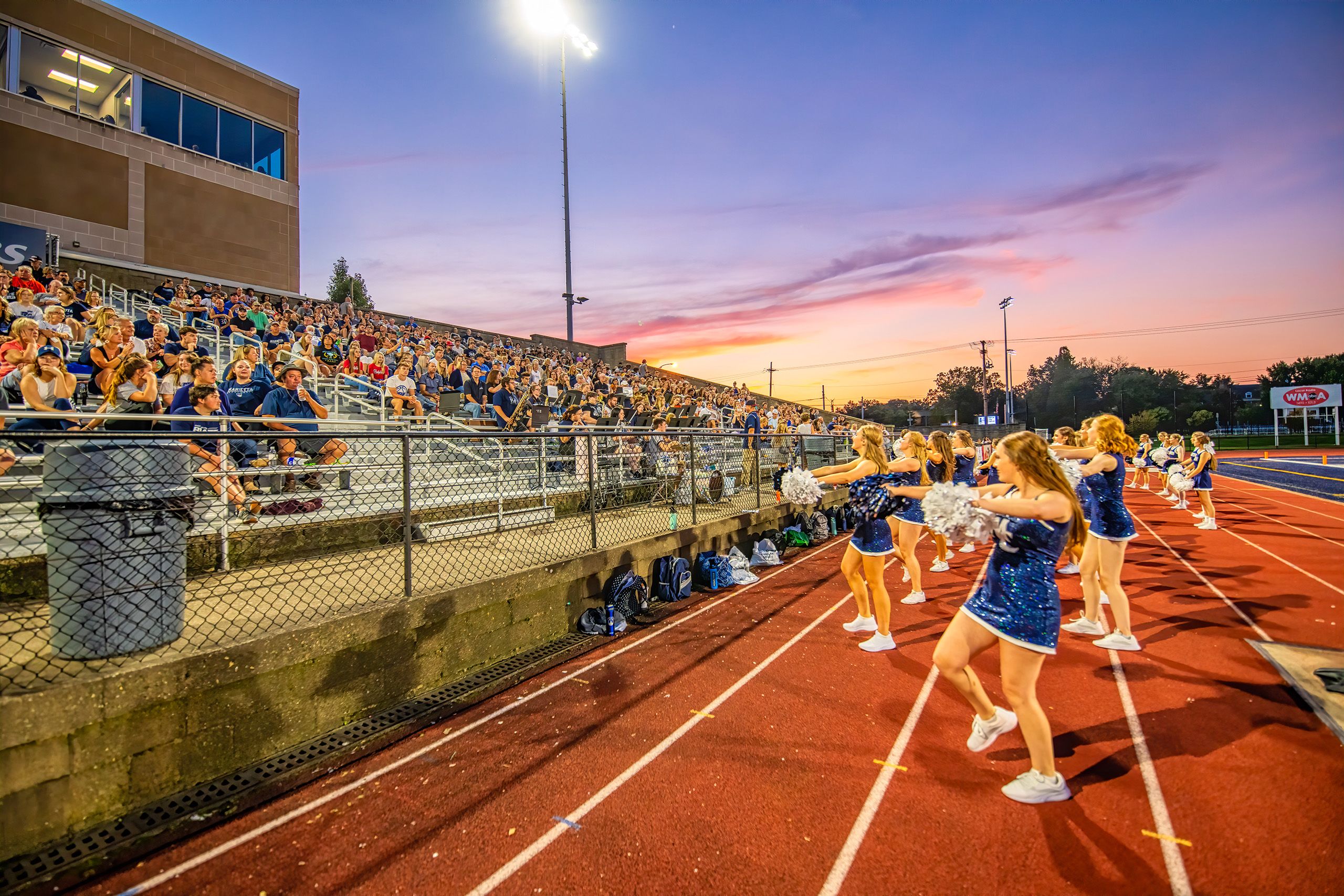
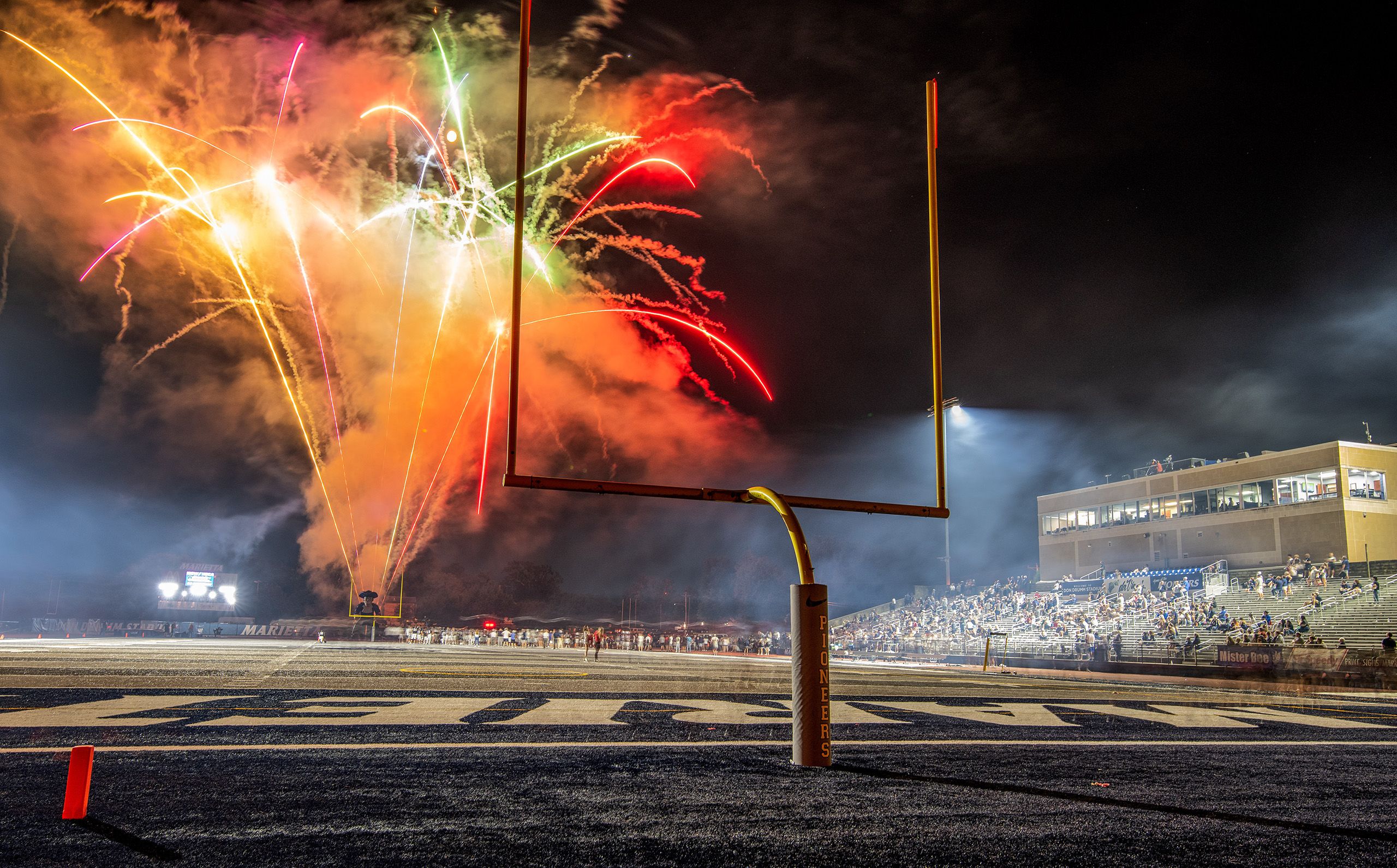

Thanks to the hard work of Marietta's Physical Plant and the commitment of the College, The Christy Mall is a stunning green space that is admired by the campus, community and visitors.
Thanks to the hard work of Marietta's Physical Plant and the commitment of the College, The Christy Mall is a stunning green space that is admired by the campus, community and visitors.

Gilman Hall's walking path is typically the way students from first-year housing reach the dining hall and academic buildings.
Gilman Hall's walking path is typically the way students from first-year housing reach the dining hall and academic buildings.

Harrison Hall offers upperclassmen apartment-style housing options, and also contains the Dr. J. Michael Harding Center for Health and Wellness. A caring mentor and talented professor, Dr. Harding joined Marietta's faculty in 1991 as an Assistant Professor until 1999. In 2003, he returned as an Associate Professor of Psychology and worked as the Director of Counseling Services. Tragically, Dr. Harding died in the summer of 2011.
Harrison Hall offers upperclassmen apartment-style housing options, and also contains the Dr. J. Michael Harding Center for Health and Wellness. A caring mentor and talented professor, Dr. Harding joined Marietta's faculty in 1991 as an Assistant Professor until 1999. In 2003, he returned as an Associate Professor of Psychology and worked as the Director of Counseling Services. Tragically, Dr. Harding died in the summer of 2011.

Fans are excited for a night game at Don Drumm Stadium, formerly the Marietta Municipal Stadium. Built in 1934 with major financial assistance from the Works Progress Administration, the facility was later renamed to honor Drumm, Class of 1915.
Fans are excited for a night game at Don Drumm Stadium, formerly the Marietta Municipal Stadium. Built in 1934 with major financial assistance from the Works Progress Administration, the facility was later renamed to honor Drumm, Class of 1915.

A major renovation project completed in 2011 added a four-story addition to Don Drumm Stadium. In 2018, President Bill Ruud announced a new renovation project that included installing FieldTurf at Don Drumm and Marietta Field that would be branded in the College's colors: Navy Blue & White, and the secondary gray color.
A major renovation project completed in 2011 added a four-story addition to Don Drumm Stadium. In 2018, President Bill Ruud announced a new renovation project that included installing FieldTurf at Don Drumm and Marietta Field that would be branded in the College's colors: Navy Blue & White, and the secondary gray color.
Winter in Marietta
A few decades ago, The Christy Mall was actually Fifth Street. In 1985, the City of Marietta agreed to close the street to traffic. Associate Trustee R. Neil Christy ’41 and his wife, Doris, and Trustee F. Leonard Christy and his wife, Helen Gramlich Christy ’47, contributed much of the cost for the construction of a walking mall. It was named in honor of Neil and Doris Christy's late son, Air Force Lt. Richard N. Christy, who died in the Vietnam War.
Until the construction of Fayerweather Hall, students relied on off-campus rentals in order to attend Marietta College. New York leather merchant Daniel Fayerweather changed that when he bequeathed between $50,000 to $300,000 to a number of American colleges and universities, including Marietta, upon his death in 1890. Fayerweather Hall became the first dormitory, serving only men until after World War II, when women took up residence. It was fully remodeled in 2005, under President Jean Scott's leadership.
Completed for the Fall 1965 semester, the Grover M. Hermann Fine Arts Center was named after the Chairman of the Martin-Marietta Corporation, who had a business dealing with Trustee F. Leonard Christy. Hermann contributed $1.175 million to build the arts center; the remainder of the nearly $1.57 million price tag came from a trust set up by Sophia Russell, sister to former Trustee Edward E. MacTaggart, Class of 1892. Today, the building contains the Art, Music, and Theatre departments, the Deem Design Center, and the Friederich Theater.
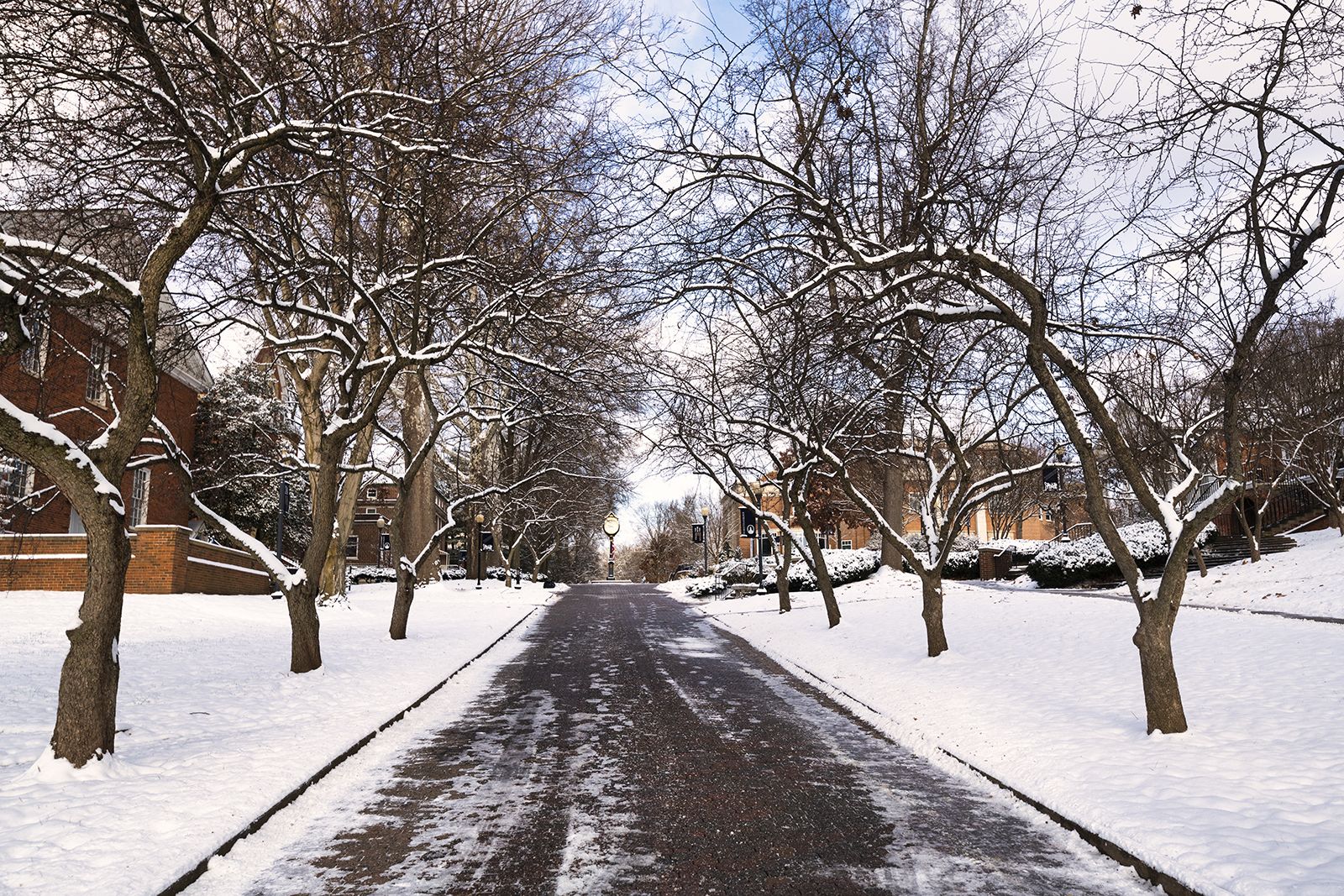
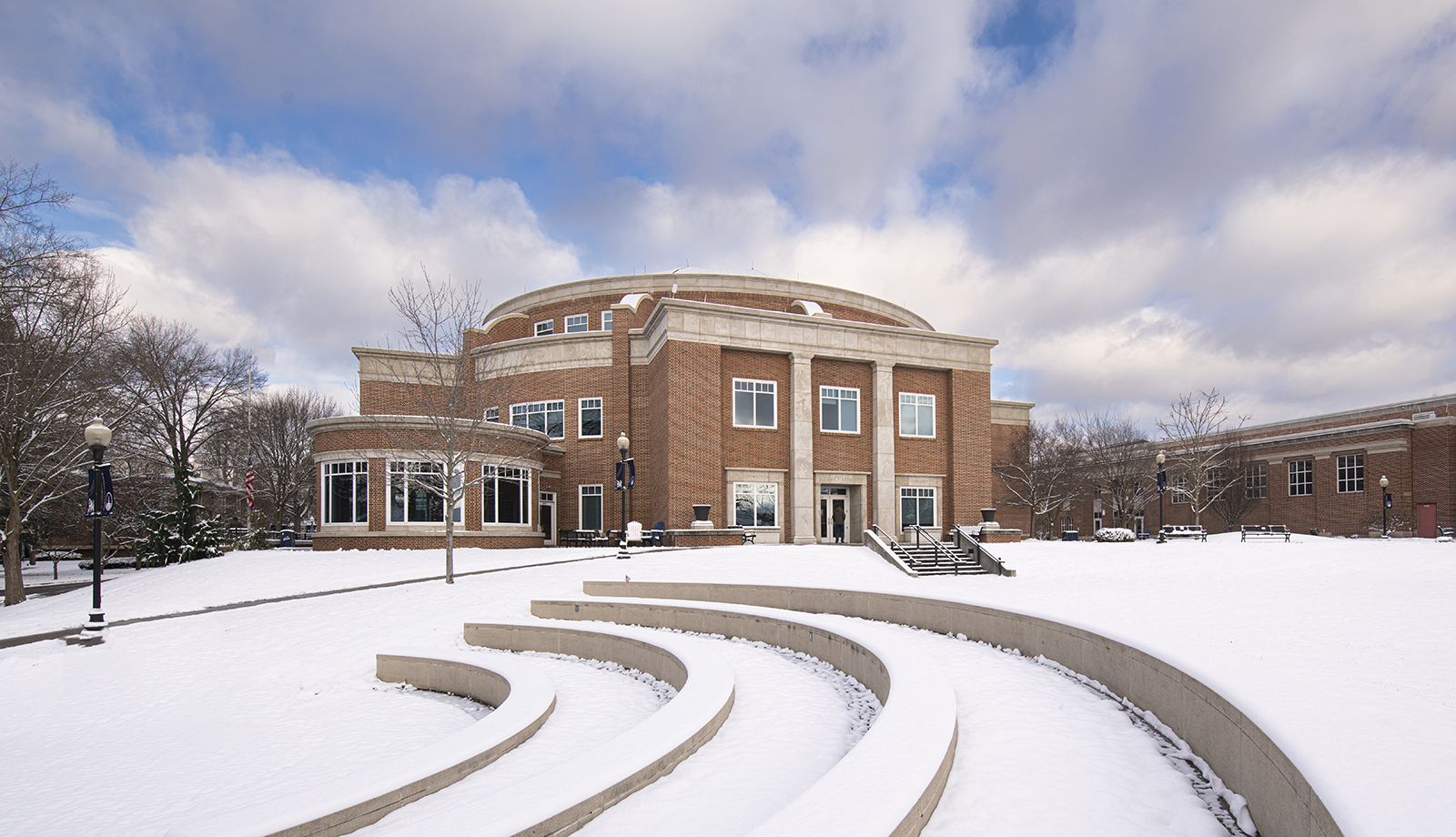
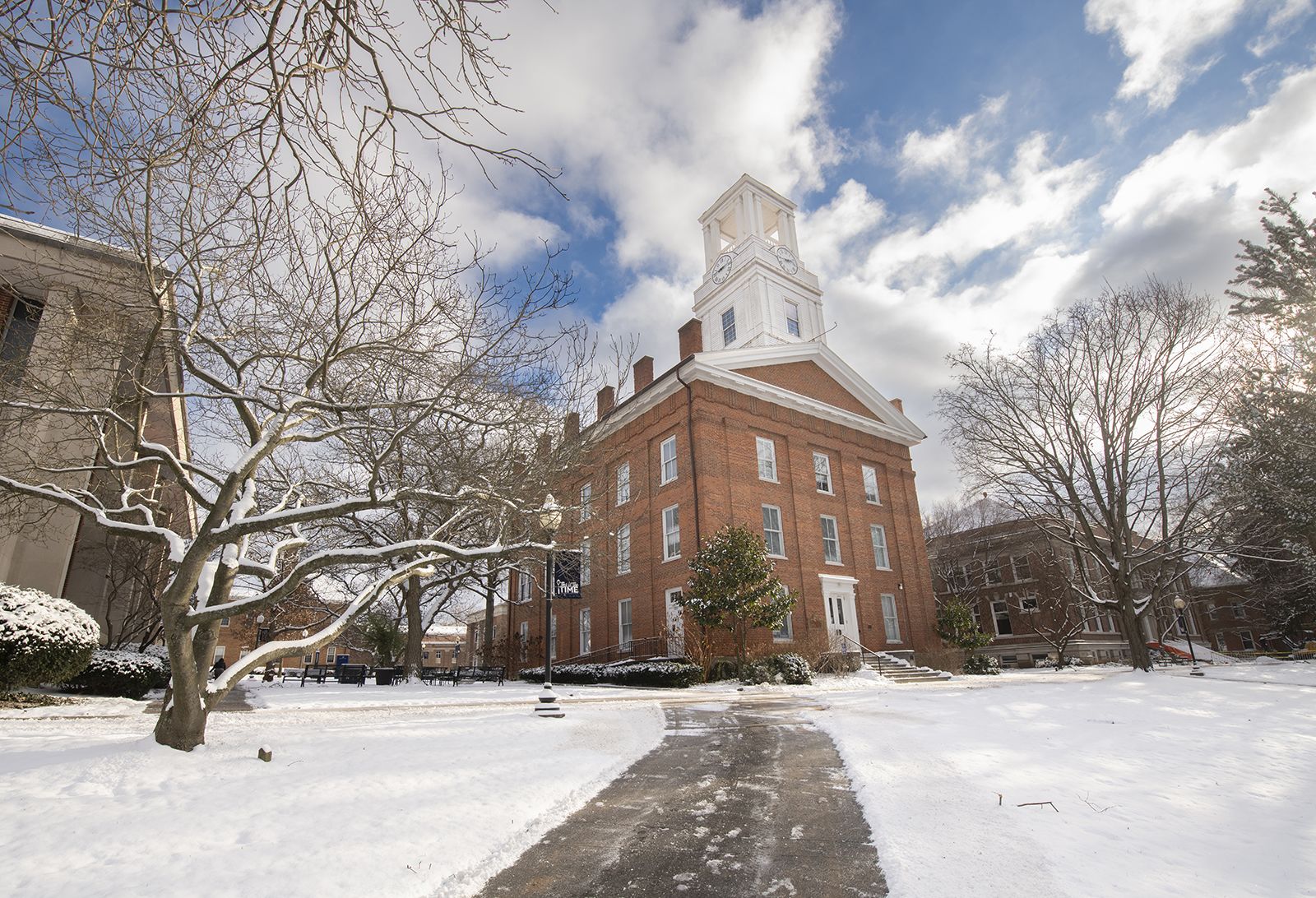
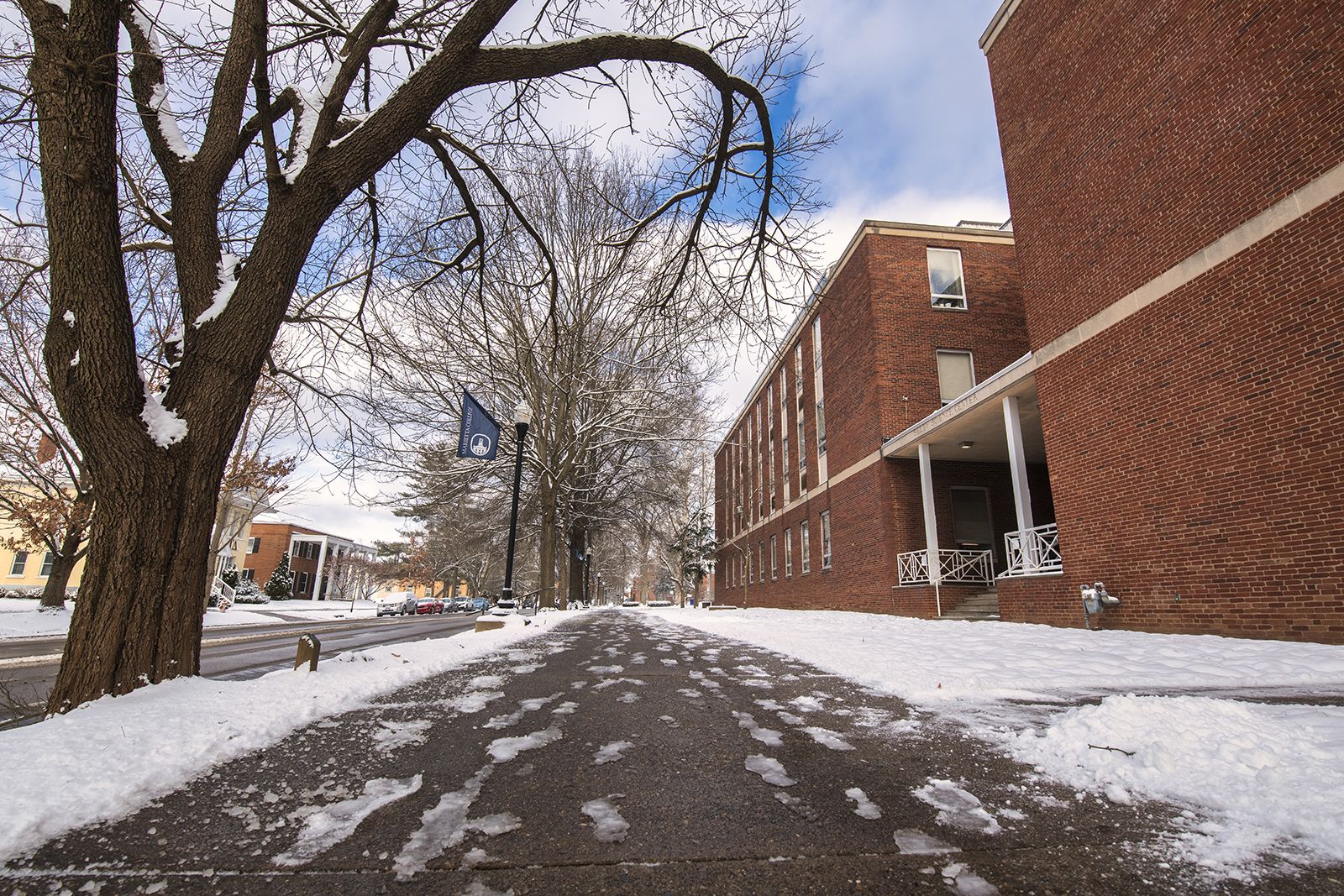

The Christy Mall's brick pathway emphasizes the historic Marietta College campus.
The Christy Mall's brick pathway emphasizes the historic Marietta College campus.

Legacy Library, completed in 2009, replaced the Dawes Memorial Library.
Legacy Library, completed in 2009, replaced the Dawes Memorial Library.

Erwin Hall, built in 1950, is the oldest academic building on campus and houses the Education Department.
Erwin Hall, built in 1950, is the oldest academic building on campus and houses the Education Department.

The Selby Chemistry Building, built in 1962, and the Bartlett Biology Building, built in 1967, are located along Fourth Street (also formerly referred to as Front Campus). The two science buildings are part of a larger Rickey Science Center.
The Selby Chemistry Building, built in 1962, and the Bartlett Biology Building, built in 1967, are located along Fourth Street (also formerly referred to as Front Campus). The two science buildings are part of a larger Rickey Science Center.
Spring in Marietta
The first, but informal, student center, Gilman Hall opened in 1958. Initially, it housed a central dining room, as well as The Marcolian and staff, due to a fire in the old Parsons Hall. Before becoming the main dining hall on campus, the lower level of Gilman was dubbed, perhaps lovingly, by students as "The Pit." Named for the Gilman family, among them prominent Pioneer athlete and Trustee Sheldon "Petey" Gilman ’08, currently houses Marietta's main dining hall, a small secondary dining stop, the Book Store, Career Center, mailroom, and Copy Center.
Harrison Hall, completed in 2012, was named after true pioneers Charles Sumner Harrison, Class of 1876, John Langston Harrison, Class of 1887, and Walter Clifton Harrison, Class of 1891. Charles was the College’s first African-American graduate. The space Harrison occupies was previously the site of twins Timblin Hall (1966) and Parsons Hall (1961), and Douglas Putnam Hall, formerly a Civil War-era chair factory acquired by Marietta and renovated in 1950. Harrison houses 364 students, mostly upperclassmen, in apartment-style accommodations.
The McDonough Center for Leadership and Business houses one of the premier leadership programs in the nation and has inspired and prepared McDonough Scholars to become change-makers in their communities and their fields. Opening in 1989, the Georgian colonial brick structure and the program it held was the result of a $5.5 million gift from Alma McDonough, in honor of her late husband industrialist Bernard McDonough.
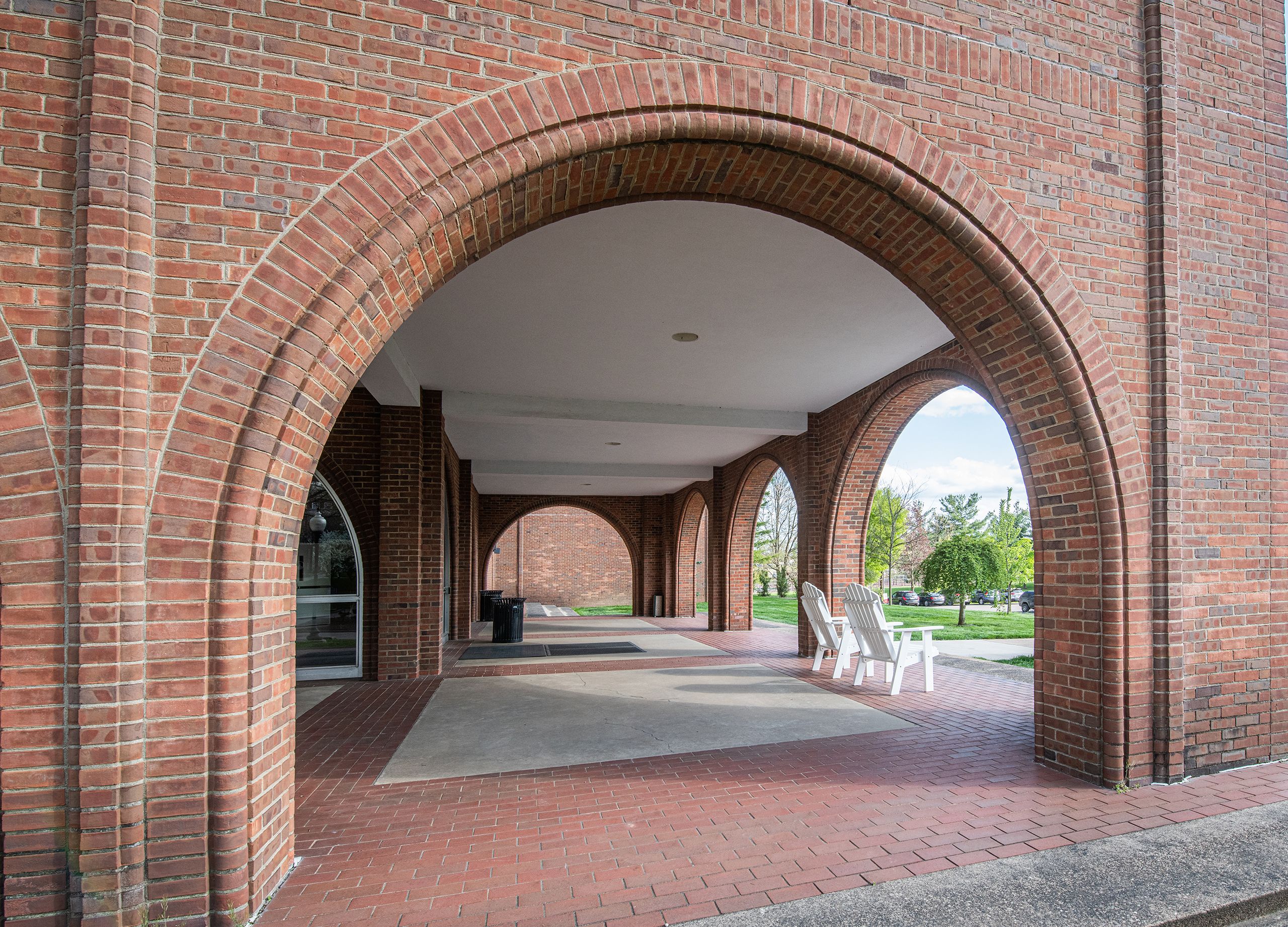
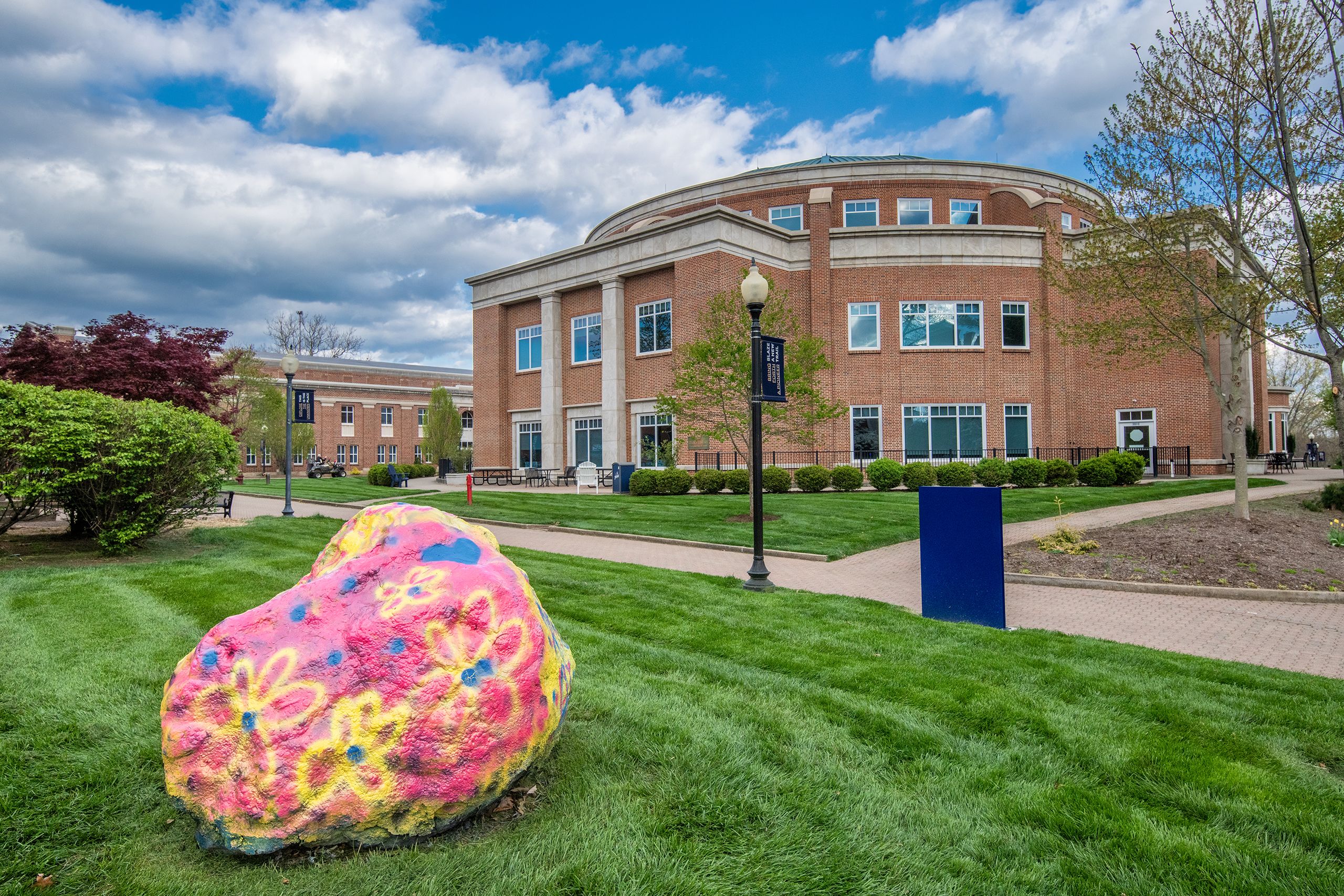
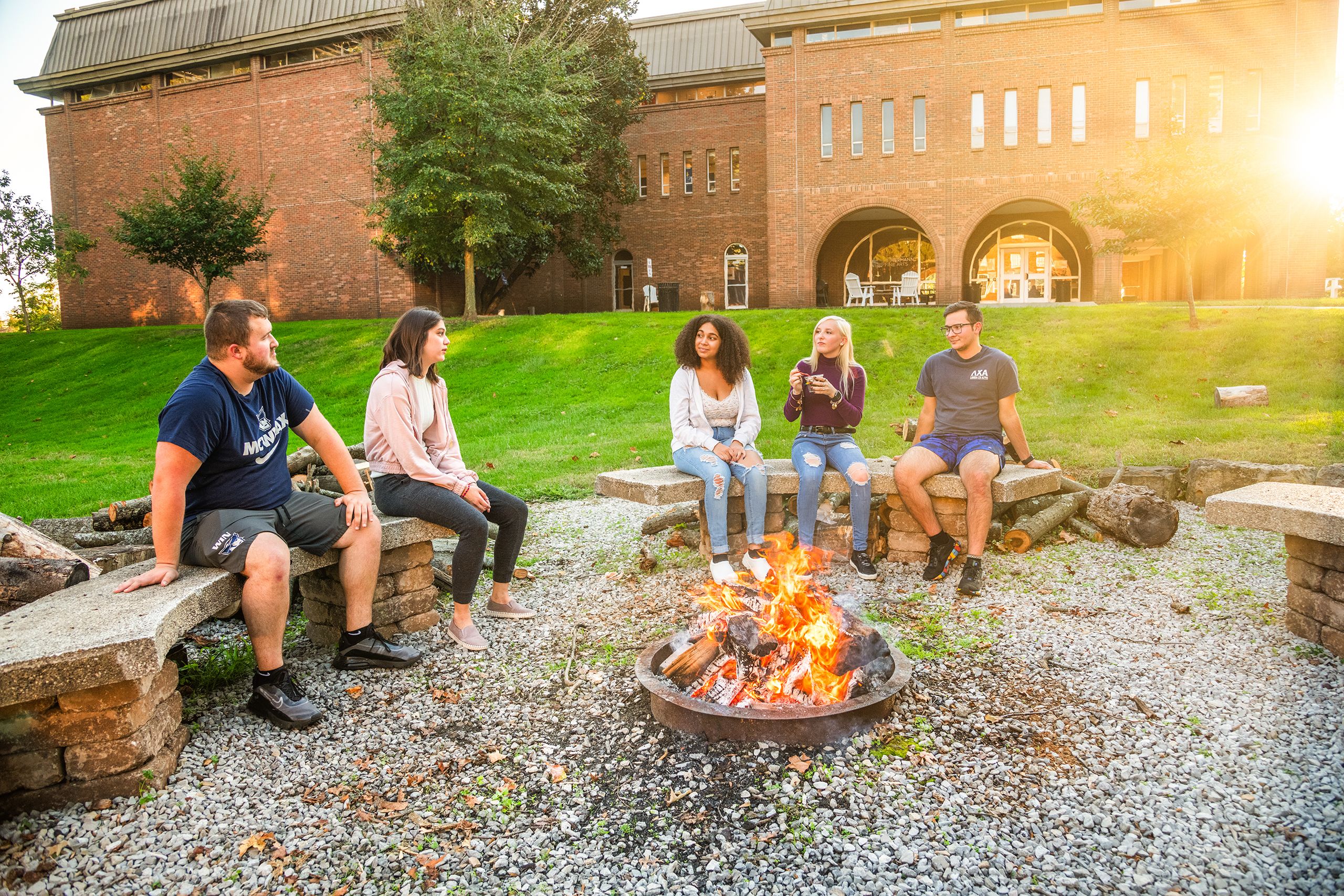
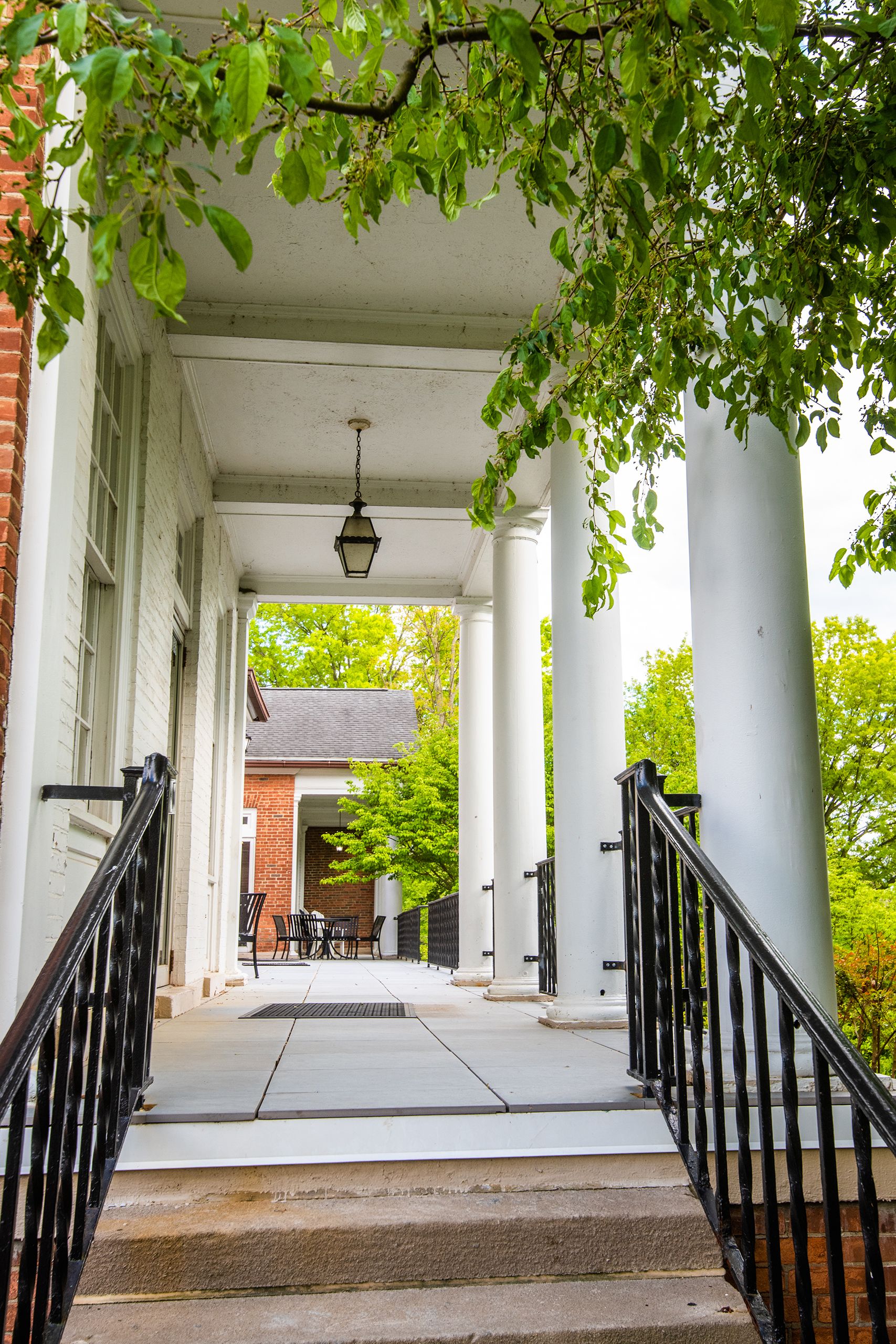
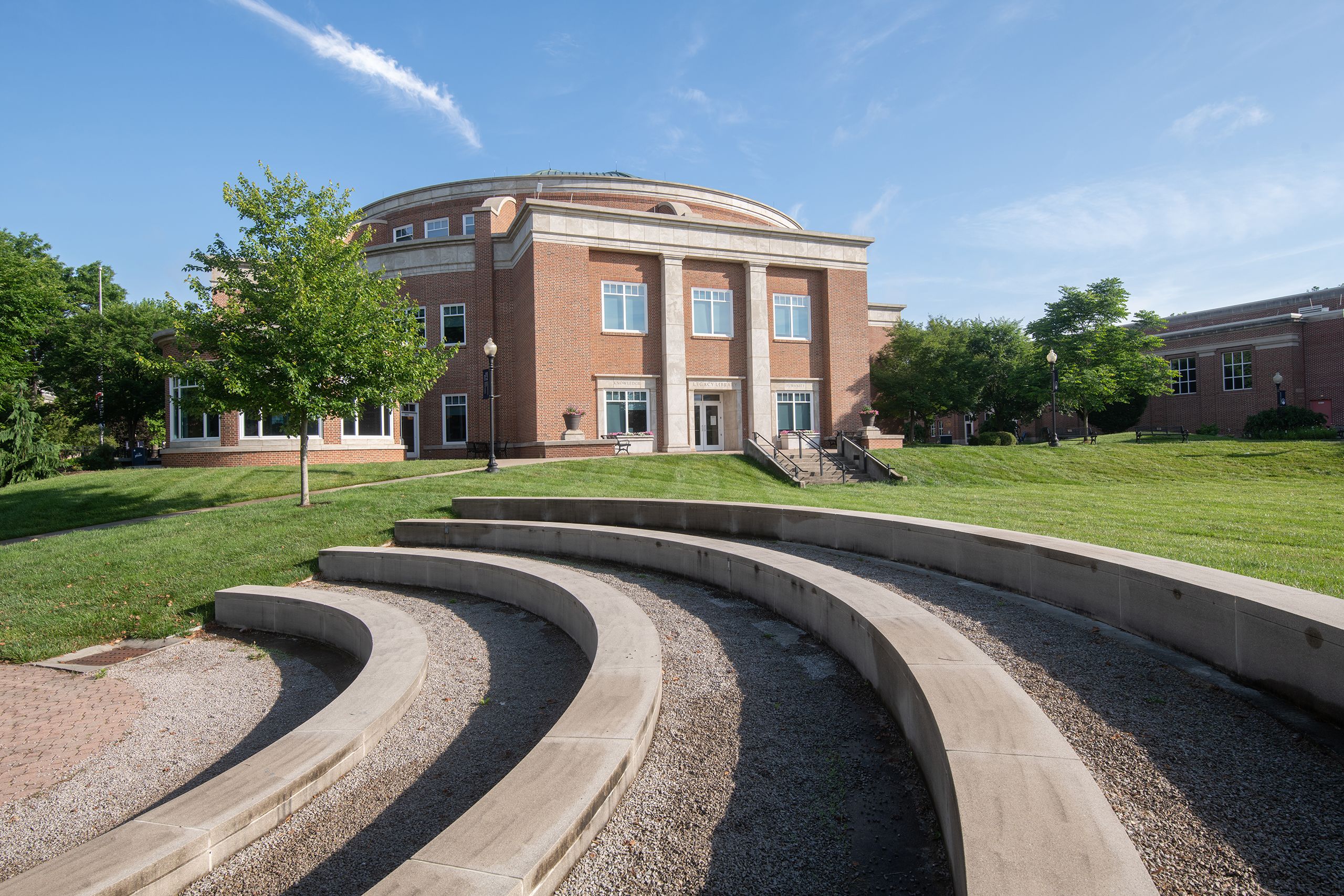
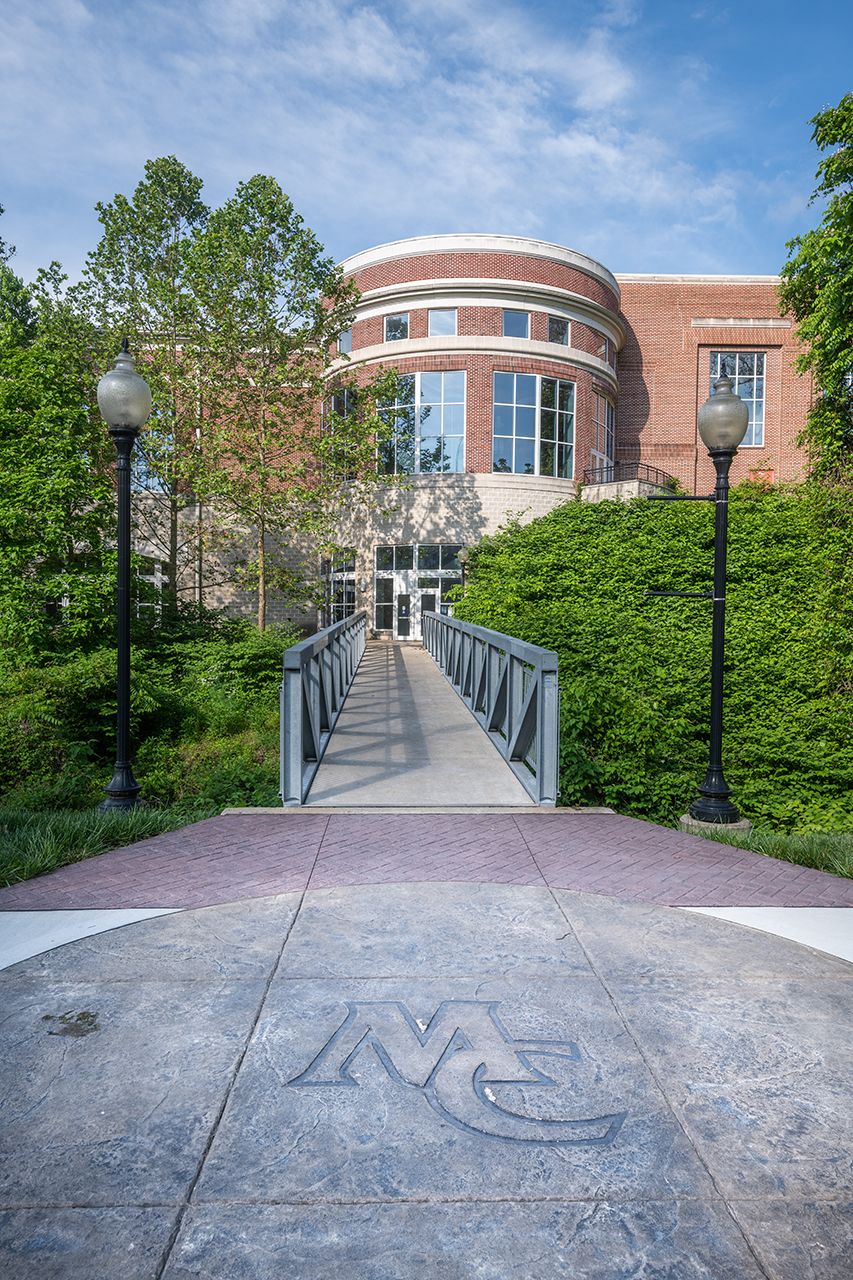

The gorgeous portico leading into the Hermann Fine Arts Center is where new students start the registration process for Fall semester.
The gorgeous portico leading into the Hermann Fine Arts Center is where new students start the registration process for Fall semester.

Though less formal than Convocation and Commencement, the time-honored tradition of painting "the Rock" in front of McDonough has been a favorite late-night event for students. The mass of concrete came to the College in 1999 via a forklift hauling it from the banks of the Muskingum River. Then Dean of the McDonough Center for Business and Leadership, the late Dr. Steve Schwartz challenged students to find something in the community that could be brought back to campus for students to paint or decorate. Leadership students Andrea Nay '99 and Megan Staley '99 came across the hunk of concrete near the Harmar footbridge and the College arranged for its transport.
Though less formal than Convocation and Commencement, the time-honored tradition of painting "the Rock" in front of McDonough has been a favorite late-night event for students. The mass of concrete came to the College in 1999 via a forklift hauling it from the banks of the Muskingum River. Then Dean of the McDonough Center for Business and Leadership, the late Dr. Steve Schwartz challenged students to find something in the community that could be brought back to campus for students to paint or decorate. Leadership students Andrea Nay '99 and Megan Staley '99 came across the hunk of concrete near the Harmar footbridge and the College arranged for its transport.

The Hermann Bowl has always been a popular hangout, and with the addition of a fire pit and stone benches, students can stay warm while they have some fun.
The Hermann Bowl has always been a popular hangout, and with the addition of a fire pit and stone benches, students can stay warm while they have some fun.

Upper Gilman's entrance leads students to the all-important mailroom and print shop, the smaller dining station and commuter lounge, and the Book Store. Overlooking a beautiful landscaped patio, Upper Gilman also has outdoor seating for students who want to enjoy some time outdoors.
Upper Gilman's entrance leads students to the all-important mailroom and print shop, the smaller dining station and commuter lounge, and the Book Store. Overlooking a beautiful landscaped patio, Upper Gilman also has outdoor seating for students who want to enjoy some time outdoors.

The meticulously maintained Kremer Amphitheatre was part of the Legacy Library construction project, which was completed in 2009. Making this enhanced green space possible was long-time Marietta College and community supporter Clare Kremer, whose late husband Richard F. Kremer ’39 and his brothers James F. Kremer ’35 and Dr. Frederick J. Kremer ’43 were all graduates of the College, along with her late mother-in-law Beatrice Kremer ’30. The green space, named the Richard and Clare Kremer Amphitheatre, provides a paved stage surrounded on three sides by tiered, in-ground seating.
The meticulously maintained Kremer Amphitheatre was part of the Legacy Library construction project, which was completed in 2009. Making this enhanced green space possible was long-time Marietta College and community supporter Clare Kremer, whose late husband Richard F. Kremer ’39 and his brothers James F. Kremer ’35 and Dr. Frederick J. Kremer ’43 were all graduates of the College, along with her late mother-in-law Beatrice Kremer ’30. The green space, named the Richard and Clare Kremer Amphitheatre, provides a paved stage surrounded on three sides by tiered, in-ground seating.

Leading from the Dyson Baudo Recreation Center to McCoy Hall, the pedestrian bridge that spans Goose Run is a well-traveled thoroughfare for students needing to get to class or wanting to get in a little workout.
Leading from the Dyson Baudo Recreation Center to McCoy Hall, the pedestrian bridge that spans Goose Run is a well-traveled thoroughfare for students needing to get to class or wanting to get in a little workout.
Summer in Marietta
The gazebo that sits across the lawn from Harrison Hall is often used by students for studying, laying in a hammock, hanging out, and organized events.
The Anderson Hancock Planetarium, which is attached to the Rickey Science Center, was dedicated in 2009. The ceremony included the building's namesakes — Professor Emeritus Les Anderson and the late Professor Emeritus Whit Hancock — Dr. Story Musgrave ’60, former NASA astronaut and surgeon, as well as the lead donors, Dave ’78 and Brenda Rickey. In addition to serving academic purposes for students in the Physics Department, the planetarium also captures the imagination of local school children and community members.
The oldest sorority at Marietta, Chi Omega became national in 1923. The sorority purchased the Grimes House in 1946, which is located across the street from the President's House on Fifth Street.
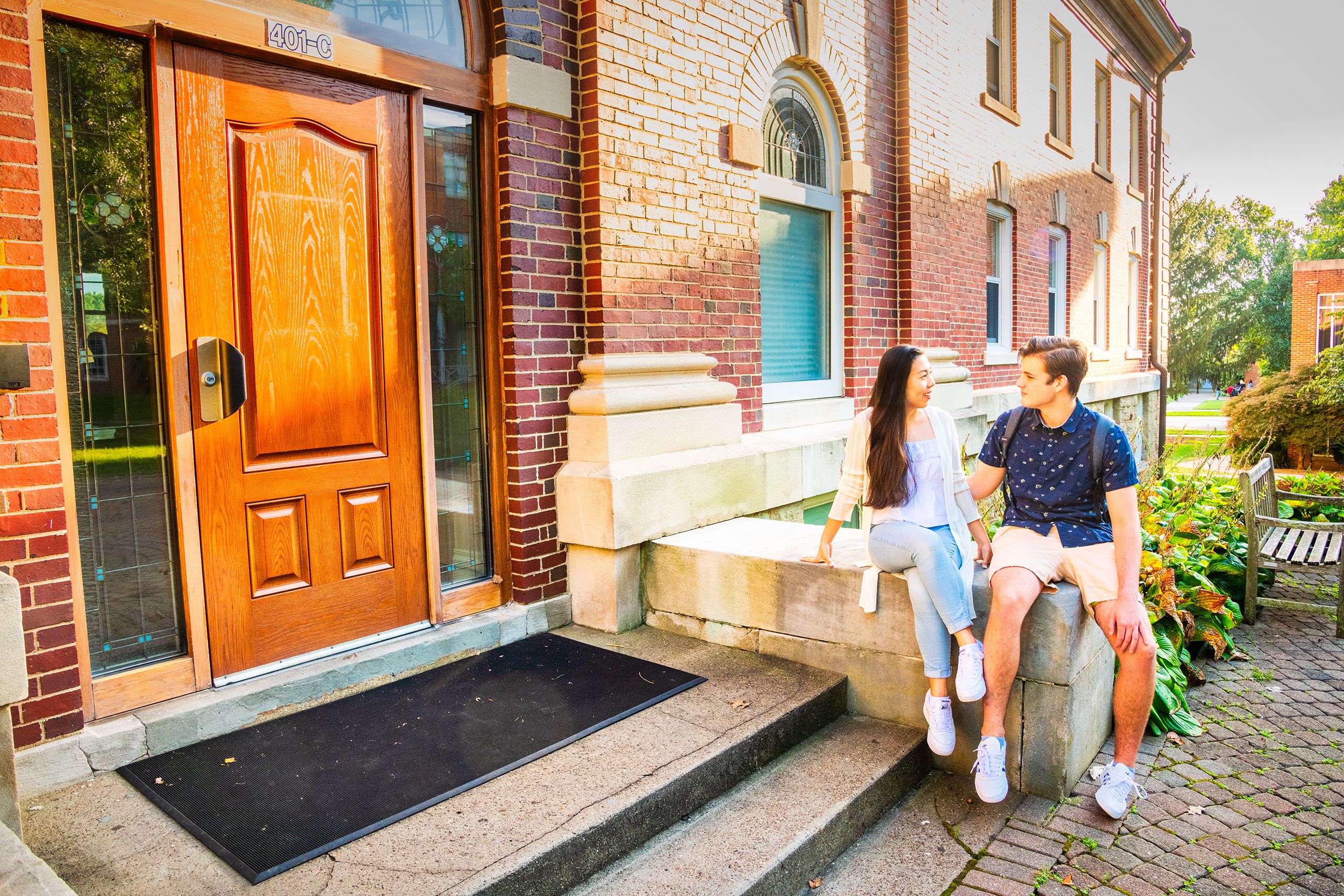
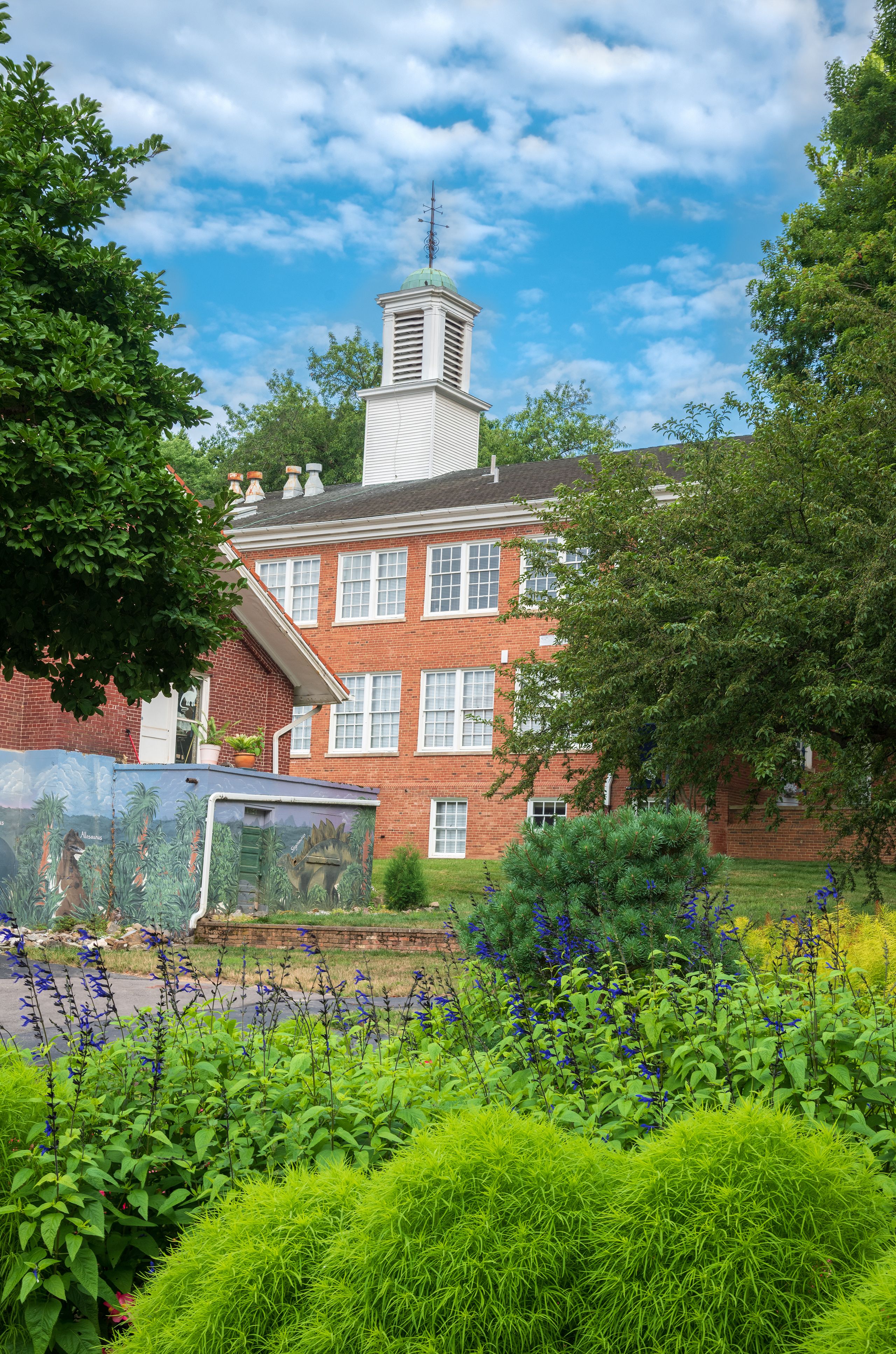


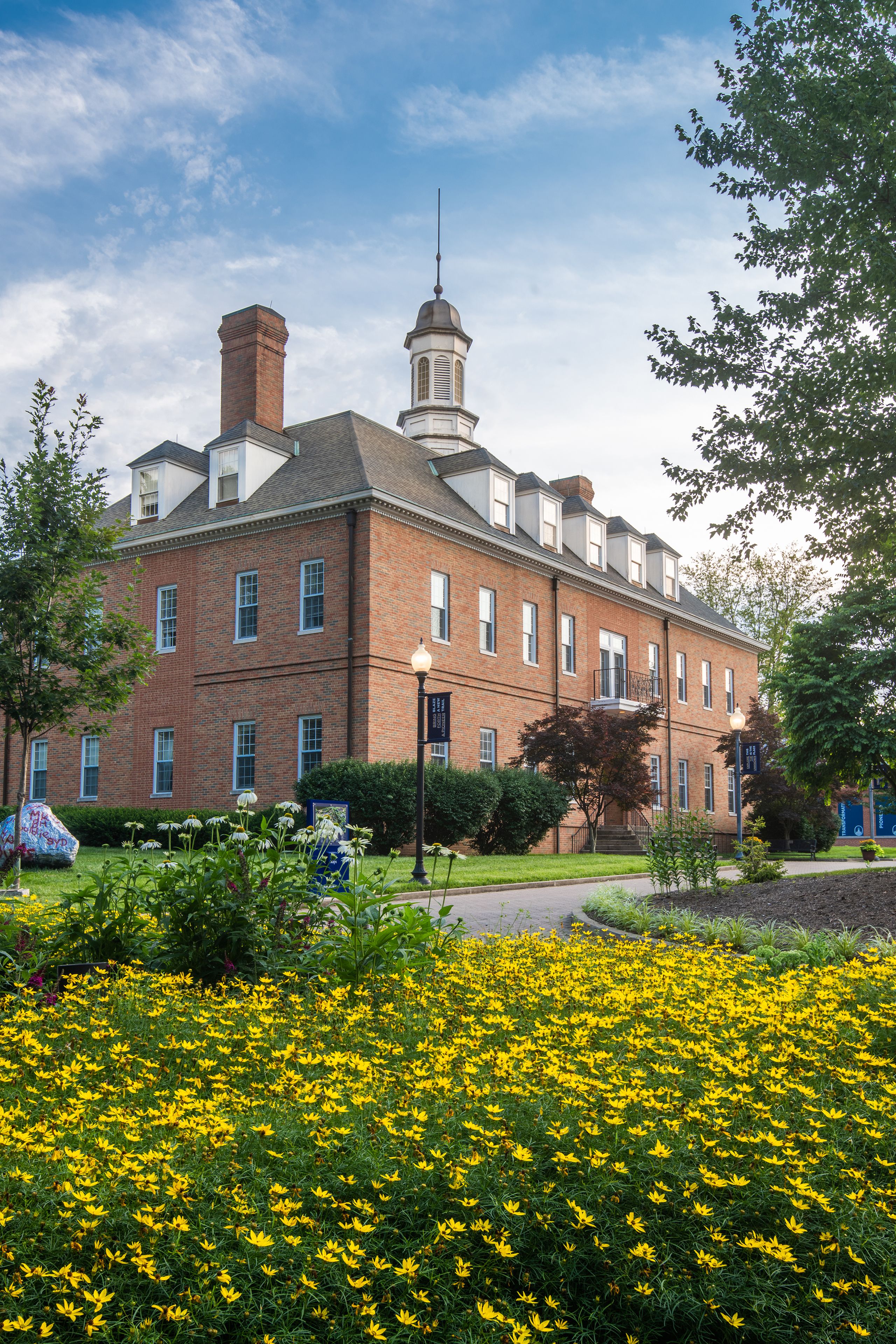
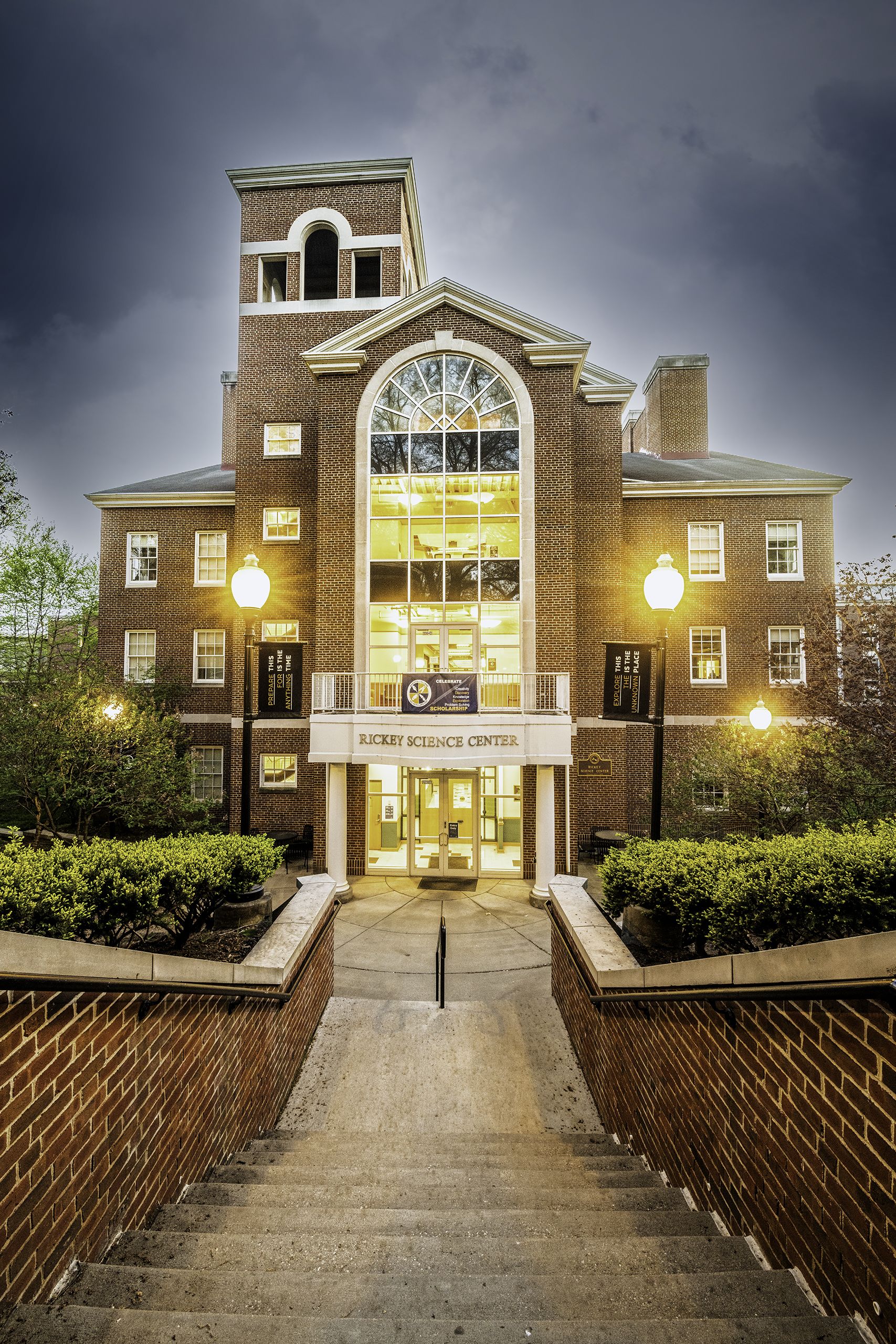

Whether it's on the steps in front of Fayerweather Hall or walking past Andrews Hall, some lucky Pioneers find their favorite person at Marietta College.
Whether it's on the steps in front of Fayerweather Hall or walking past Andrews Hall, some lucky Pioneers find their favorite person at Marietta College.

Class of 1894 graduate Edwy R. Brown, a member of Phi Beta Kappa, began working for a New York oil refinery shortly after graduation, enduring a grueling work environment in the new industry for only 15 cents per hour. His hard work paid off, and the oilman — elected as a Marietta College Trustee in 1919 — initially and anonymously donated $200,000 toward the 1939 Five-Year Forward Fund. He provided an additional $1.5 million in his estate plan, bequeathing $300,000 to establish Marietta's Petroleum Program in memory of his sister, Mary Ellen Brown, a Marietta schoolteacher. In Spring 2005, the College also unveiled about $2 million worth of renovations to the Edwy R. Brown Petroleum Engineering Building. Countless leaders in the energy industry having received their education and training from Marietta College's renowned program. Today, the Brown Building houses the Petroleum, Geology, and Environmental Engineering programs.
Class of 1894 graduate Edwy R. Brown, a member of Phi Beta Kappa, began working for a New York oil refinery shortly after graduation, enduring a grueling work environment in the new industry for only 15 cents per hour. His hard work paid off, and the oilman — elected as a Marietta College Trustee in 1919 — initially and anonymously donated $200,000 toward the 1939 Five-Year Forward Fund. He provided an additional $1.5 million in his estate plan, bequeathing $300,000 to establish Marietta's Petroleum Program in memory of his sister, Mary Ellen Brown, a Marietta schoolteacher. In Spring 2005, the College also unveiled about $2 million worth of renovations to the Edwy R. Brown Petroleum Engineering Building. Countless leaders in the energy industry having received their education and training from Marietta College's renowned program. Today, the Brown Building houses the Petroleum, Geology, and Environmental Engineering programs.

Spring's blooming trees frame the Hermann Fine Arts Center, providing just a preview of the beauty and creativity found within the building.
Spring's blooming trees frame the Hermann Fine Arts Center, providing just a preview of the beauty and creativity found within the building.

In 2003, the College completed the Dyson Baudo Recreation Center, an 86,000-square-foot athletic facility made possible with lead donations from Rob Dyson '68 and Laura Baudo Sillerman '68. Ban Johnson Fieldhouse and Fenton Court were also renovated during this time. The DBRC has hosted concerts, political rallies and OAC championships. Naturally it also became — and remains — a central location for recreational opportunities, including a rock climbing wall, fitness center and racquetball courts.
In 2003, the College completed the Dyson Baudo Recreation Center, an 86,000-square-foot athletic facility made possible with lead donations from Rob Dyson '68 and Laura Baudo Sillerman '68. Ban Johnson Fieldhouse and Fenton Court were also renovated during this time. The DBRC has hosted concerts, political rallies and OAC championships. Naturally it also became — and remains — a central location for recreational opportunities, including a rock climbing wall, fitness center and racquetball courts.

The McDonough Center for Leadership and Business features one of two carillons on campus.
The McDonough Center for Leadership and Business features one of two carillons on campus.

Dedicated in 2003, the Rickey Science Center is a complex of three connected buildings (Rickey, Selby and Bartlett buildings) plus the Anderson Hancock Planetarium. It is home to the Biology and Environmental Science, Chemistry, Mathematics and Computer Science, and Physics departments. It also features a greenhouse. The center’s name honors the multi-million dollar gifts from David M. Rickey ’78, the J & D Family Foundation and Jan E. Nielsen.
Dedicated in 2003, the Rickey Science Center is a complex of three connected buildings (Rickey, Selby and Bartlett buildings) plus the Anderson Hancock Planetarium. It is home to the Biology and Environmental Science, Chemistry, Mathematics and Computer Science, and Physics departments. It also features a greenhouse. The center’s name honors the multi-million dollar gifts from David M. Rickey ’78, the J & D Family Foundation and Jan E. Nielsen.
Construction of Erwin Hall was completed in 1850 and was originally named the Chapel Building, but was later also called the Middle Building and Science Hall. Rufus Erastus Harte designed the Greek revival structure, and construction began with its cornerstone being laid in 1845. It is the oldest academic building on Marietta College’s campus. It was dedicated in 1893 as Erwin Hall in memory of Connecticut industrialist and Marietta College benefactor Cornelius B. Erwin. He was a friend to Marietta College faculty member, Ebenezer Baldwin Andrews, and had made generous donations to the College, though it is believed that he had never visited campus. The original bell that once adorned the clock tower was cracked in 1855 and replaced shortly thereafter. In the 1930s, the building was painted white. In addition to its uses for academics, the building has been used as a chapel, a meeting space for literary, debate and Greek societies, a library, an art studio, among other uses. It currently houses the Education Department.
